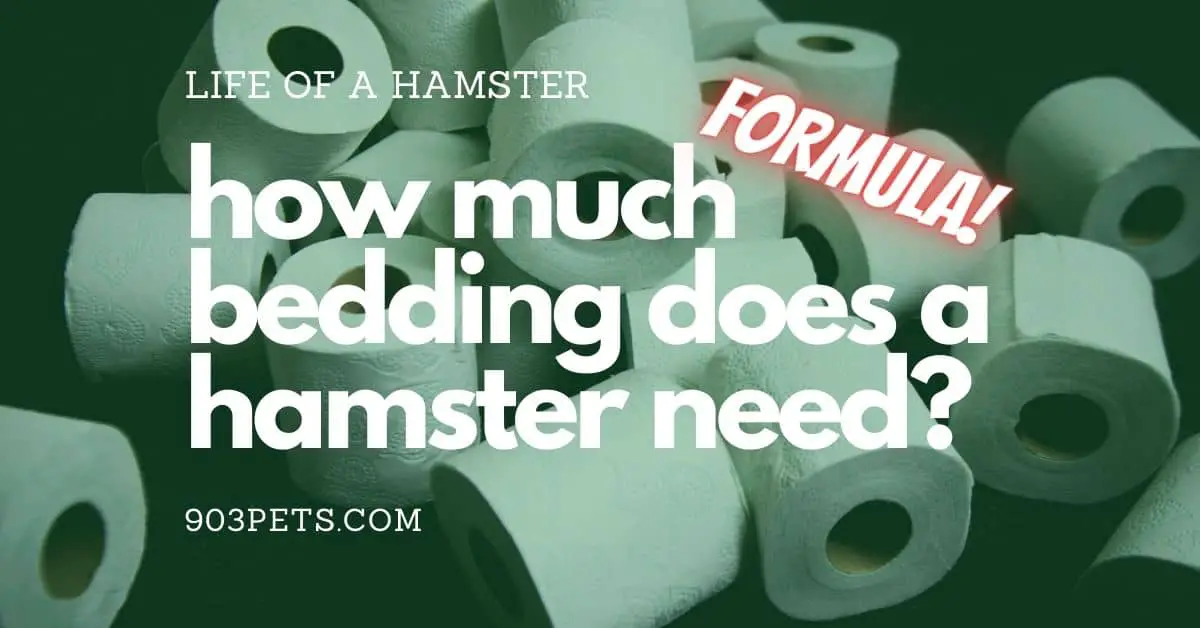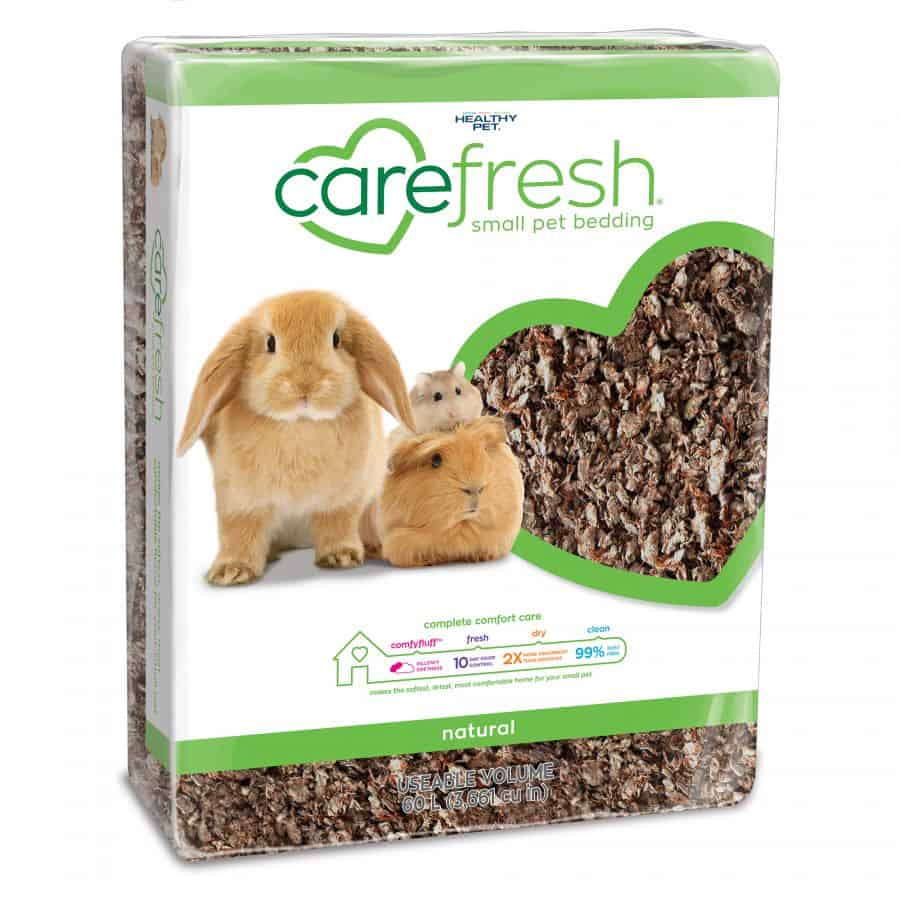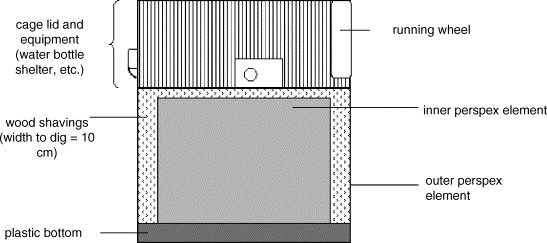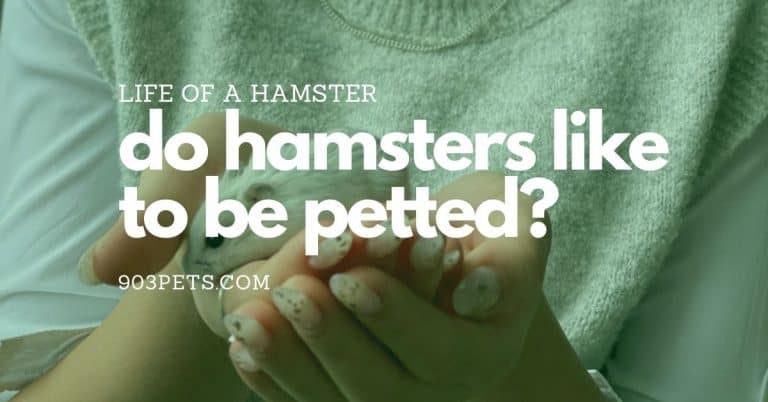How Much Bedding Do Hamsters Need: Calculating and Buying
It’s important to know how much bedding you need for your hamster and what types are best. You’ll want to buy an appropriate amount of bedding when it’s time to change the bedding in your hamster habitat.
I was totally surprised by how deep hamster bedding actually needs to be. The big-box pet stores are just plain wrong with the cages they sell and the information they provide.
Keep reading and we will help you calculate and purchase the right amount of bedding for your furry friend!

What is the minimum bedding that a hamster needs?
Hamsters need a minimum bedding depth of four to six inches. The best depth of bedding depends on the type of hamster. For example, Syrians need deeper bedding than dwarf hamsters.
Our Pick For Best Hamster Bedding
Studies and research suggest that paper bedding is best for our hammies. The Carefresh natural paper bedding for small animals is our top pick to use, today.
What We Like:
- Natural paper bedding
- 99% dust free – Reduced cause of respiratory issues for hamsters and human in some cases.
- Up to 10 Days of ammonia odor control
- Good for tunneling and burrowing
- Reduced chance for cuts from sharp portions
- Good absorbency

Optimal health is indicated when the bedding depth is 15.7 to 31.4 inches (40cm to 80cm). According to a 2005-2006 study, this deeper bedding depth allows hamsters to create burrows, improving health and reducing stress.
To fill a typical 24″ by 12″ hamster habitat to a depth of 4 inches, you will require 1,152 cubic inches or about 18.9 liters of expanded bedding. Most hamster bedding comes in packages in 12, 40, 50, 60-liter sizes or larger.
You should change out hamster bedding a minimum of once a week (every two to three days if you have more than one). So that means an 80-liter package will last about a month for one hamster in a 24″ x 12″ bedding pan with a bedding depth of 4 inches.
[Also Read] – Best Humane Hamster Cages [Guide]
For optimal health and lifespan of a hamster, the rule is hamsters should have bedding that is 15.7 to 31.4 inches (40cm to 80cm) deep to encourage natural behaviors of burrowing and toilet use while reducing stress levels. All of which can contribute to a healthier and longer life for your hamster.
How to calculate how much bedding you need
To calculate how much bedding you need, measure the size of your hamster‘s habitat in square feet. For example, if you have a typical 24″ by 12″ hamster habitat, multiply these two numbers to get 288 sq ft (24 x 12 = 288).
Next, multiply this number by depth, in inches, of bedding you desire. So, for the number above: 288 * 4 = 1,152 cubic inches!
So the formula goes like this:
length * width * depth of bedding = cubic area bedding needed 24 * 12 * 4 = 1152 cu. in. 1152 cu. in. * 0.016387 = 18.8779 Liters
Most bedding is labeled in liters (L). To convert cubic inches to liters, multiple by 0.016387.
So, 1152 cu. in = 18.8779 Liters. Who new math was needed to own a hamster! Lol!
Don’t freak out. You only need to do this one time for the enclosure size, and then you know what to get from now on. Remember this doesn’t have to be exact, it is just to help you know about how much to buy.
We made it easy by creating the hamster bedding calculator. Try it out!
Now, depending on the type of bedding, the package will be compressed, pressing lots of bedding into a smaller package and getting rid of the air between pieces. When you open it and break up the bedding, it expands, leaving room for air in between pieces.
You are paying for the compressed volume of the bedding in the packaging. When you open it and place it in your hamster enclosure, you will want to fluff and break up the bedding into soft layers.
I say all this because a 60L package of paper-based bedding may actually cover 65-70L in actual use. Different brands will expand more than others. Just remember that as the bedding gets soiled (wet) is compresses.
The moral of the story is to calculate the bedding needed and purchase based on the compressed size, but don’t be surprised if your purchase goes a little bit further than expected.

Types of hamster bedding materials and their pros and cons
When we talk about hamster bedding, also called substrate, we generally refer to four types of bedding, paper-based, Aspen, granular, and fluff. However, we recommend only using paper-based and Aspen bedding and not granular or fluff substrates.
The best hamster bedding is actually a combination of bedding types with half of the enclosure containing Aspen wood shavings and the other 50% filled with a paper-based bedding.
If you don’t want to use multiple types of bedding, Aspen wood is the winner for best hamster bedding given its durability, natural odor-control properties, and burrow-ability. You can buy aspen wood bedding for hamsters and gerbils easily at most pet stores and some feed stores in your local area.
Paper Based Hamster Bedding
One of the most popular types of bedding for hamsters is paper-based bedding. By far, this is the most popular bedding type and is the most economical bedding compared to Aspen wood.
Paper-based hamster bedding is more absorbent than Aspen wood shavings. Some commercial paper-based bedding products also contain odor control properties that can last 7-10 days.
Did you know there is the best color for paper-based bedding? White is the best-recommended color for hamster bedding. This is because it is easier to see soiled areas that require cleaning so that you can change out only the bedding needed.
This saves time, expense and helps keep your hamster calm. See, hamsters use their great sense of smell to keep orientated to their environment. By only removing the soiled bedding helps keep some of the familiar smells for your hamster. That is why full bedding changes are not always recommended.
My favorite paper-based bedding for hamsters is the White CareFresh Small Pet Bedding.
Toilet Paper for Hamster Bedding
Toilet paper, while safe, is just not robust bedding. Toilet paper is not a great hamster bedding choice for two reasons, lack of durability and odor control.
Toilet paper is highly absorbent. When it gets wet from water, poo, and pee, it immediately begins to break down. It loses its fluff, pancakes flat, and transfers the liquid onto adjacent pieces of toilet paper. This chain reaction means that toilet paper loses its burrow-ability for hamsters and creates a flat, wet mess.
Toilet paper also has no odor-control capabilities. Unfortunately, toilet paper absorbs and holds all liquids and the chemical properties that cause nasty smells, including ammonia.
All of this means that toilet paper while generally safe for hamsters, it is really a poor bedding option.
Aspen Wood Hamster Bedding
There is only one type of wood bedding that we suggest for Hamsters: Aspen wood bedding. It is both affordable and offers good odor control for your hamster.
Aspen should not be confused with Pine or Cedar bedding. Both Pine and Cedar are toxic to hamsters causing infections, tumors, respiratory issues, and eventually death.
Aspen is 50% of the bedding we recommend when it comes to the best bedding for hamsters. It holds its shape, provides an excellent environment for burrowing, and is easy to clean when soiled.

Fluff Hamster Bedding
Another type of hamster bedding is known as fluff. As the name implies, this type of bedding is fluffy. This bedding is typically made from 100% cotton or a mix of cotton and other manufactured materials.
Fluffy hamster bedding is dangerous and should not be used for small animals for two primary reasons.
- Cotton fluffy bedding is not water-soluble, so it does not break down when wet and ingested by small animals. This can cause death due to intestinal blockages.
- Fluffy cotton bedding has long fibers. These long fibers get tangled around small limbs, cutting off circulation and can cause the need for surgical amputations in small animals.
Please do not use fluffy bedding for your hamster unless it is paper-based, water-soluble, and toxin/dye-free.
Conclusion
Hamsters need lots of space, probably more than most new hamster owners think. They also need deeper bedding than often thought since burrowing is a common and needed activity to keep your hamster healthy.
Use the formula above to calculate the volume of bedding you need and then purchase a paper-based small animal bedding or an Aspen wood-based bedding. Do not use cotton, pine, or cedar bedding types. Don’t forget to clean the hamster enclosure properly.
The deeper bedding, with the right mix of paper-based and Aspen bedding, will make your hamster feel safe, active, and potentially live much longer than alternative living conditions. Give your hamster the best. They are counting on you.
If you think your pet is ill, call a vet immediately. All health-related questions should be referred to your veterinarian. They can examine your pet, understand its health history, and make well informed recommendations for your pet.
903pets.com Staff

![The Ultimate Guide To Hamster Names [2021] 5 The Ultimate Guide To Hamster Names [2021]](https://cdn-0.903pets.com/ifywhoft/2021/09/The-Ultimate-Guide-To-Hamster-Names-2021-768x402.jpg)

![Are Hamster Wheels Safe? [How To Pick] 9 Are Hamster Wheels Safe? [How To Pick]](https://cdn-0.903pets.com/ifywhoft/2021/06/Are-Hamster-Wheels-Safe-768x402.jpg)
![Hamster Escaped - Where To Find A Lost Hamster Indoors Fast [Statistics] 11 Hamster Escaped – Where To Find A Lost Hamster Indoors Fast [Statistics]](https://cdn-0.903pets.com/ifywhoft/2022/02/where-to-find-a-lost-hamster-indoors-768x402.png)
![How To Clean A Hamster Cage Step-by-Step [Schedule & Tips] 13 How To Clean A Hamster Cage Step-by-Step [Schedule & Tips]](https://cdn-0.903pets.com/ifywhoft/2022/03/Cleaning-a-hamster-cage-step-by-step-schedule-768x402.png)
![What Do Hamsters Eat [Do's and Don'ts] 15 What Do Hamsters Eat [Do’s and Don’ts]](https://cdn-0.903pets.com/ifywhoft/2022/01/What-Can-Hamster-Eat-Dos-and-Donts-768x402.jpg)